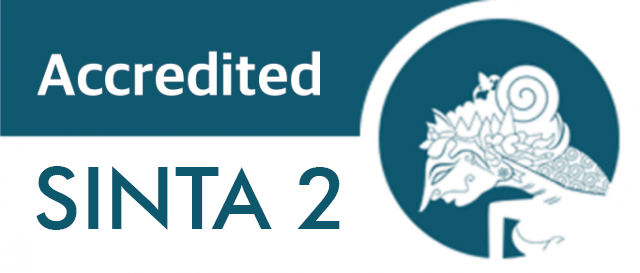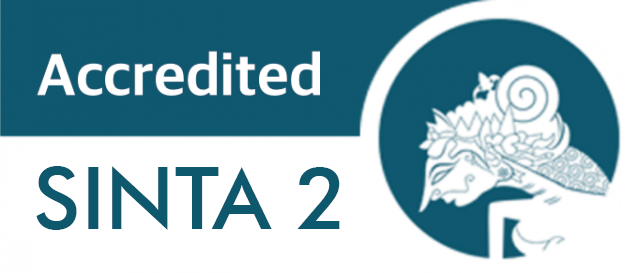Adverse Drug Reaction of Antipsychotic Medications Among Geriatric Patients: A Review
Introduction: Antipsychotic is the drug of choice in patients with mental disorders, especially schizophrenia. The use of antipsychotics in geriatric patients presents a concern, as age can lead to physiological changes that can impact both therapeutic effects and side effects. Problems related to drug therapy, if not resolved, can lead to decreased quality of life, increased health care costs, increased clinical consequences, and even mortality. The aim of this study was to systematically evaluate and assess adverse drug reactions of antipsychotics among geriatric patients. Methods: Systematic literature search using Cochrane, ProQuest, Science Direct, Scopus, PubMed, and Google Scholar with a publication time limit from 2013 to 2023. We conducted the review in accordance with PRISMA provisions. We identified a total of 1145 articles and included 7 of them in the review. Results: This review presents the incidence of antipsychotic side effects in geriatric patients. The side effects that were observed included low blood pressure, increased blood pressure, somnolence, dizziness, constipation, agitation, weight gain, tremors and extra-pyramidal symptoms, hyperprolactinemia, tachycardia, bradycardia, insomnia, and sedation. Regarding the regimen, four studies reported olanzapine. Two studies reported clozapine and risperidone, and one study reported haloperidol, cariprazine, levomepromazine, and quetiapine. Conclusion: Follow-up and long-term studies with larger sample sizes in geriatrics are needed to confirm the side effects of antipsychotics. Knowledge of drug side effects is useful for determining appropriate therapy for geriatric patients with psychiatric disorders.
Introductions
Antipsychotics have been widely used as a therapy to treat psychiatric disorders, including schizophrenia. Antipsychotics are effective in treating schizophrenia, but some population groups respond to antipsychotics variously. Antipsychotics are classified into two groups: atypical antipsychotics, or first-generation antipsychotics (FGA), and typical antipsychotics, or second-generation antipsychotics (SGA). The differences between FGAs and SGAs mainly lie in the receptor profile, the incidence of extrapyramidal side effects (SGAs are lower than FGAs), efficacy (especially of clozapine) in groups that do not respond to antipsychotic treatment, and their effect on negative symptoms[1].
Therapy using antipsychotics, especially in schizophrenia patients, is generally chronic. The most common problems related to drug therapy in psychiatric departments are drug-drug interactions and the presence of drug side effects[2]. An adverse drug reaction (ADR) is an unintended and accidental response to a drug, which occurs from the use of a medicinal product at doses normally used in humans for prevention, diagnosis, or therapy of diseases or for modification of physiological functions[3],[4]. Antipsychotic side effect profiles are important in determining treatment options for specific populations. For example, adolescents are more susceptible to the side effects of weight gain and sedation, while geriatrics may be more susceptible to side effects such as orthostatic hypotension, dyskinetic dyskinesia, and anticholinergic effects[5].
Antipsychotic drugs have been used in geriatrics suffering from psychosis or dementia-related behavioral disorders. A meta-analysis showed that geriatrics with psychotic disorders who used antipsychotics had a 1.6 to 1.7-fold increased risk of death. The cause of the increased mortality may be due to sudden cardiac death and cerebrovascular accidents[6].
Treatment of adverse drug reactions in geriatrics needs to be a concern because age can affect physiological changes, such as decreased cardiac output (reduction in hepatic and renal blood flow), possible decrease in liver metabolism, decreased glomerular filtration rate, and changes in body fat composition. These changes can alter the pharmacokinetics of drugs. Changes in fat composition contribute significantly to body mass in the elderly, which can affect changes in the volume of drug distribution. Decreased drug elimination may increase prolonged effects and greater pharmacodynamic sensitivity of both therapeutic response and side effects[1],[7]. This study aims to identify and evaluate adverse drug reactions of antipsychotics that are often used as therapy for mental disorders in geriatric patients so that it is useful to determine the selection of appropriate therapy for geriatric patients.
Methods
This study was a systematic review to collect, assess, and evaluate the side effects of antipsychotics often used in geriatric patients with mental disorders. Searching for articles or literature is carried out using 6 (six) search engines, including Cochrane, ProQuest, Science Direct, Scopus, PubMed, and Google Scholar, with a publication time limit with a period of the last 10 years. A common search strategy used for databases is using Boolean operators. The keywords used are "adverse drug reaction," "schizophrenia," and "elderly.". Articles or literature that have been obtained are then identified and filtered based on predetermined inclusion and exclusion criteria. The inclusion criteria were cohort, case-control, clinical trials, and cross-sectional studies evaluating antipsychotic side effects in elderly patients. Research using Indonesian or English. Exclusion criteria include article reviews, case reports, case studies, and descriptive research.
The systematic review of research follows the provisions of Preferred Reporting Items for Systematic Review (PRISMA). The data analysis process begins according to the PRISMA method, including the identification, screening, and eligibility of articles to be analyzed. The results will be recorded and presented in table form, accompanied by explanations, discussions, and conclusions.
Results
Of the 1.145 articles that were retrieved through visiting search engines, 6 duplicates were identified and removed using Mendeley. A total of 1.139 articles were saved for further screening. Among which, a total of 1,105 records were excluded based on title and abstract. The full texts of the remaining 34 articles were thoroughly assessed for eligibility, and 27 were excluded because they had reported unclear or mixed findings and/or incomplete information. Finally, 7 articles were included in the review.
The limit of the publication year limit for included research ranges from 2013 to 2023. A review of demographic distribution is also included. Four of these studies had employed cohort design[8]–[11], two studies had employed non-randomized, open-labeled, and observational trials[12],[13], and the remaining one study had employed clinical trials[14]. The research sample size ranged from 23[13]to 61915[10]. The majority of studies were conducted on geriatric patients older than 60 years with schizoaffective or schizophrenia disorders, while other studies were conducted on bipolar, organic disorder, mood disorder, depression, dementia, and any mental, behavioral, and neurodevelopmental disorder. Two studies were conducted with inpatients[11],[13], whereas five studies were outpatients[8]–[10],[12],[14].
The side effects of antipsychotics found in geriatrics are presented inTable 2.. Side effects include low blood pressure[10],[12],[13], increased blood pressure[12]–[14], somnolence[12],[13], dizziness[12],[13], constipation[11], agitation[9],[13], weight gain[9],[14], tremors and extra-pyramidal symptoms[9],[11],[14], hyperprolactinemia[14], tachycardia[9], bradycardia[13], insomnia[14], and sedation[9]. Regarding the regimen, four studies reported olanzapine[8],
J. M. Ritter, R. J. Flower, G. Henderson, Y. K. Loke, H. P. Rang, and D. MacEwan, Rang and Dale’s Pharmacology. Elsevier, 2019. [Online]. Available: https://books.google.co.id/books?id=y-C9ugEACAAJ
A. Jayakumar et al., “Critical analysis of drug related problems among inpatients in the psychiatry department of a tertiary care teaching hospital: A pharmacist led initiative,” Clin. Epidemiol. Glob. Heal., vol. 11, p. 100743, Jul. 2021, doi: 10.1016/j.cegh.2021.100743.
J. J. Coleman and S. K. Pontefract, “Adverse Drug Reactions,” C. Clin. Pharmacol., vol. 16, no. 5, pp. 481–486, 2016.
BPOM RI, “Pedoman Monitoring Efek Samping Obat (MESO) Bagi Tenaga Kesehatan,” Direktorat Pengawas. Distrib. Prod. Ter. dan PKRT Badan Pom RI, pp. 1–35, 2019.
T. S. Stroup and N. Gray, “Management of common adverse effects of antipsychotic medications,” World Psychiatry, vol. 17, no. 3, pp. 341–356, Oct. 2018, doi: 10.1002/wps.20567.
J. Muench and A. Hamer, “Adverse Effects of Antipsychotic Medications,” Am. Fam. Physician, vol. 81, pp. 617–622, 2010.
G. A. Keepers et al., “The American Psychiatric Association Practice Guideline for the Treatment of Patients With Schizophrenia,” Am. J. Psychiatry, vol. 177, no. 9, pp. 868–872, Sep. 2020, doi: 10.1176/appi.ajp.2020.177901.
W. Greil, A. Häberle, T. Schuhmann, R. Grohmann, and P. Baumann, “Age and adverse drug reactions from psychopharmacological treatment: Data from the AMSP drug surveillance programme in Switzerland,” Swiss Med. Wkly., Jul. 2013, doi: 10.4414/smw.2013.13772.
E. Iqbal et al., “The side effect profile of Clozapine in real world data of three large mental health hospitals,” PLoS One, vol. 15, no. 12, p. e0243437, Dec. 2020, doi: 10.1371/journal.pone.0243437.
M.-E. Friedrich et al., “Cardiovascular Adverse Reactions During Antipsychotic Treatment: Results of AMSP, A Drug Surveillance Program Between 1993 and 2013,” Int. J. Neuropsychopharmacol., vol. 23, no. 2, pp. 67–75, Mar. 2020, doi: 10.1093/ijnp/pyz046.
P. NM et al., “Evaluation of Drug Related Problems Among the Geriatric Inpatients of Psychiatry Department: A Retrospective Study,” Aging Med. Healthc., vol. 14, no. 1, pp. 29–33, Mar. 2023, doi: 10.33879/AMH.141.2021.11108.
H. Suzuki and K. Gen, “A naturalistic comparison of the efficacy and safety of intramuscular olanzapine and intramuscular levomepromazine in agitated elderly patients with schizophrenia,” Neuropsychiatr. Dis. Treat., p. 1281, Aug. 2013, doi: 10.2147/NDT.S50754.
H. Suzuki, K. Gen, and Y. Takahashi, “A naturalistic comparison of the efficacy and safety of intramuscular olanzapine and intramuscular haloperidol in agitated elderly patients with schizophrenia,” Ther. Adv. Psychopharmacol., vol. 3, no. 6, pp. 314–321, Dec. 2013, doi: 10.1177/2045125313496113.
B. Szatmári et al., “Cariprazine Safety in Adolescents and the Elderly: Analyses of Clinical Study Data,” Front. Psychiatry, vol. 11, Mar. 2020, doi: 10.3389/fpsyt.2020.00061.
J. Michl et al., “A multivariate approach linking reported side effects of clinical antidepressant and antipsychotic trials to in vitro binding affinities,” Eur. Neuropsychopharmacol., vol. 24, no. 9, pp. 1463–1474, Sep. 2014, doi: 10.1016/j.euroneuro.2014.06.013.
M. Solmi et al., “Safety, tolerability, and risks associated with first- and second-generation antipsychotics: a state-of-the-art clinical review,” Ther. Clin. Risk Manag., vol. Volume 13, pp. 757–777, Jun. 2017, doi: 10.2147/TCRM.S117321.
N. D, Pedoman Pelayanan Kefarmasian pada Pasien Gangguan Jiwa. Jakarta, 2021.
J. A. Lieberman, “Maximizing clozapine therapy: managing side effects.,” J. Clin. Psychiatry, vol. 59 Suppl 3, pp. 38–43, 1998.
N. N. Raju, K. S. V. R. N. P. Kumar, and G. Nihal, “Management of Medication-Induced Psychiatric Disorders,” Indian J. Psychiatry, vol. 64, no. Suppl 2, pp. S281–S291, Mar. 2022, doi: 10.4103/indianjpsychiatry.indianjpsychiatry_21_22.
N. . Crismon, T. Smith, and P. . Buckley, “Schizophrenia,” in Pharmacotherapy A Pathophysiologic Approach, 11th ed., and V. L. E. J. T. DiPiro, G. C. Yee, L. M. Posey, S. T. Haines, T. D. Nolin, Ed. United States, 2020, pp. 3181–3268.
T. Ali, M. Sisay, M. Tariku, A. N. Mekuria, and A. Desalew, “Antipsychotic-induced extrapyramidal side effects: A systematic review and meta-analysis of observational studies,” PLoS One, vol. 16, no. 9, p. e0257129, Sep. 2021, doi: 10.1371/journal.pone.0257129.
M. Piras et al., “Is Clozapine-induced Weight Gain Dose-dependent? Results From a Prospective Cohort Study,” Schizophr. Bull., vol. 49, no. 4, pp. 944–952, Jul. 2023, doi: 10.1093/schbul/sbad009.
J. W. Y. Yuen, D. D. Kim, R. M. Procyshyn, W. J. Panenka, W. G. Honer, and A. M. Barr, “A Focused Review of the Metabolic Side-Effects of Clozapine,” Front. Endocrinol. (Lausanne)., vol. 12, Feb. 2021, doi: 10.3389/fendo.2021.609240.
G. Scigliano and G. Ronchetti, “Antipsychotic-Induced Metabolic and Cardiovascular Side Effects in Schizophrenia: A Novel Mechanistic Hypothesis,” CNS Drugs, vol. 27, no. 4, pp. 249–257, Apr. 2013, doi: 10.1007/s40263-013-0054-1.
M. Stojkovic, B. Radmanovic, M. Jovanovic, V. Janjic, N. Muric, and D. I. Ristic, “Risperidone Induced Hyperprolactinemia: From Basic to Clinical Studies,” Front. Psychiatry, vol. 13, May 2022, doi: 10.3389/fpsyt.2022.874705.
S. Gupta, D. A. M. Lakshmanan, U. Khastgir, and R. Nair, “Management of antipsychotic-induced hyperprolactinaemia,” BJPsych Adv., vol. 23, no. 4, pp. 278–286, Jul. 2017, doi: 10.1192/apt.bp.115.014928.
A. Tewksbury and A. Olander, “Management of antipsychotic-induced hyperprolactinemia,” Ment. Heal. Clin., vol. 6, no. 4, pp. 185–190, Jul. 2016, doi: 10.9740/mhc.2016.07.185.
X.-Q. Li, X.-R. Tang, and L.-L. Li, “Antipsychotics cardiotoxicity: What’s known and what’s next,” World J. Psychiatry, vol. 11, no. 10, pp. 736–753, Oct. 2021, doi: 10.5498/wjp.v11.i10.736.
Copyright (c) 2025 Sholikhah Rosvita Oktasari, Zullies Ikawati, Bambang Hastha Yoga Legawa Budiman

This work is licensed under a Creative Commons Attribution-ShareAlike 4.0 International License.
1. Copyright of this journal is possession of the Author, by the knowledge of the Editorial Board and Journal Manager, while the moral right of the publication belongs to the author.
2. The journal allows the author(s) to retain publishing rights without restrictions.
3. The articles are published under a Creative Commons Attribution Share-Alike (CC BY-SA) license. Many research funding bodies prefer the CC BY-SA license because it allows for maximum dissemination and re-use of open access materials. Users are free to share (copy, distribute, and transmit) and remix (adapt) the contribution under this license, including for commercial purposes, as long as they attribute the contribution in the manner specified by the author or licensor.




























